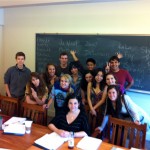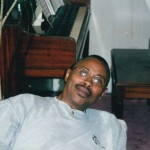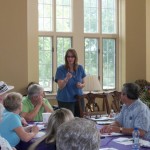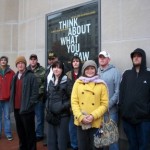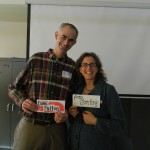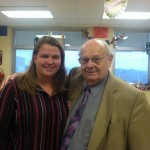Inquiry into Action – Becoming a Holocaust Educator
Forums › 2023 Summer Seminar › Becoming a Holocaust Educator 2023 Summer Seminar Responses: due JUNE 18 (or earlier) › Inquiry into Action – Becoming a Holocaust Educator
-
AuthorPosts
-
-
June 19, 2023 at 7:03 pm #31885
Safely in. Safely out. Writing. Inquiry. Context and content. Know yourself and know your learners. Listen. Student voices. Empathy and ethics. Community. Action.
Gathering teacher voices is a kaleidoscope of perspectives, pedagogy, passions, strengths, and fears. The recognition of this by Jennifer and Scott allows us to find both pieces of our own teacher-self, as well as a glimpse into others’ classrooms. The, “Hey! I have done/thought that, too!” And the “Whoa! That’s an idea I could use!” I come to realize that, in general, I bring to this text a range of experience “teaching-the-Holocaust” from as a novice teacher, to a teacher who often tried “new” things, only to learn from the ‘oops’ of the classroom/student reality when the lesson doesn’t go as planned or anticipated, and as a more seasoned teacher who was better able to ‘read-the-room’ — yes, I saw myself in several chapters and scenarios.
Moving from the introduction, I was first drawn to Diana Wagner’s chapter, “I See You” and the use of primary source photographs, As the daughter of a photographer, and as one who often documents an experience visually over words, I was curious how she navigated and selected images to use. I appreciate selecting images that portray intentional perspectives, lenses. So many photos are from the POV of the perpetrators, those who documented and recorded so much of the atrocities. Locating, then choosing those images from bystanders was more difficult, but showing those allows students to note what and who and where photos were taken. Her ‘case study’ of the Warsaw Boy used as a catalyst for personal writing was a beautiful example of supporting student connection, empathy, and remembrance. These personal narratives, both written and visual are tender spaces for connection and community.
The final chapter by Diane Williams, “Student Voices Empower a Community,” resonated with the interdisciplinary teacher in me. When not tightly bound by one set of teaching standards, one can teach more to student passions. As she says when the students ‘get’ the injustice, “So, what are you going to do about it?” Adolescents care deeply about (in)justice, though often it looks and sounds like, “That’s unfair!” When invited to ask questions and plan for action, it is transformative learning. As Eleanor Roosevelt said, “Where, after all, do universal human rights begins? In small places close to home—so close and so small that they cannot be seen on any maps of the world….” As a teacher, I along with Williams, would like to think that I have supported my students in creating a space for them to bring about that better world. Allow and encourage big questions…BIG questions! And give them the time and space and resources to follow their passions. Currently, I am proud to have part of a journey with these two former students who were part of a recent Holocaust unit I taught using testimony and art; they are on the cusp of creating a book about their oft overlooked community! (‘Two Students Write Book About the Culture of the South Valley’ – KOAT News and KRQE NEws and KOB NEws) Yes, students care, have voice, have questions, and the teaching of the Holocaust can be a vehicle to open up their hearts and minds, leading to action.
-
-
AuthorPosts
- You must be logged in to reply to this topic.
Recent Replies
Recently Active
-
Active 2 days, 12 hours ago
-
Active 3 days, 12 hours ago
-
Active 3 days, 16 hours ago
-
Active 4 days, 8 hours ago
-
Active 1 week, 2 days ago
- View All Members

